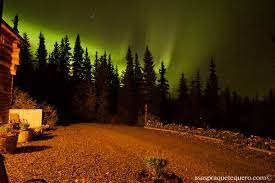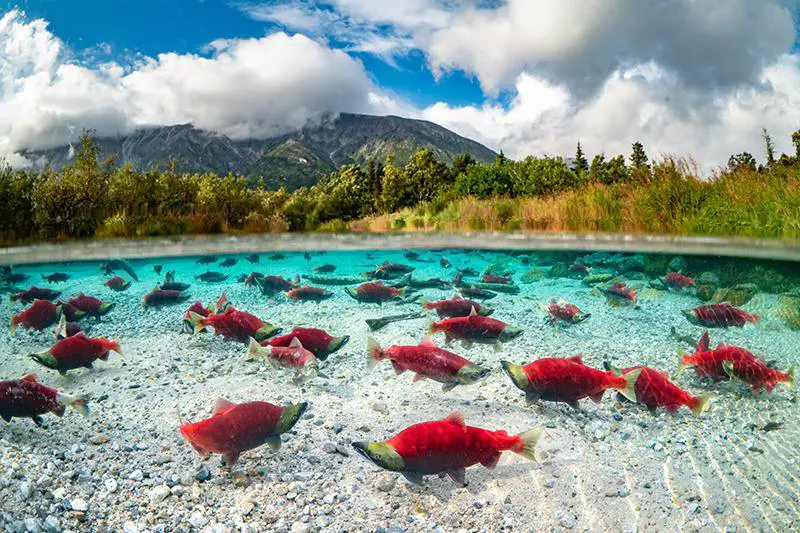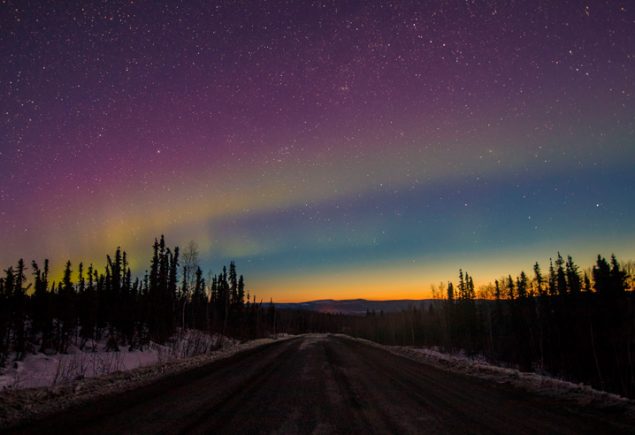Alaska is a state located in the northwest extremity of the United States. It is the largest state in the United States in terms of land area, covering over 663,000 square miles (1.7 million square kilometers). Despite its size, Alaska has a relatively small population, with only about 730,000 people as of 2021.
Alaska is known for its natural beauty, including vast wilderness areas, glaciers, mountains, and wildlife such as bears, moose, and bald eagles. The state is also home to several indigenous groups, including the Inupiat, Yupik, and Aleut peoples.
The capital of Alaska is Juneau, but the largest city is Anchorage. Other major cities include Fairbanks and Sitka. The economy of Alaska is heavily based on natural resources such as oil, natural gas, and fishing, as well as tourism.

Alaska was purchased from Russia by the United States in 1867 and became the 49th state of the United States in 1959.
- Alaska is the largest state in the United States, with an area of 663,268 square miles (1,717,856 square kilometers).
- Despite its large size, Alaska is the least populous state in the United States, with a population of around 731,545 people (as of 2021).
- The state capital of Alaska is Juneau, which is located in the Southeastern part of the state.
- The highest point in North America, Denali (also known as Mount McKinley), is located in Alaska. It is 20,310 feet (6,190 meters) tall.
- Alaska is known for its glaciers, which cover about 5 percent of the state’s land area. The largest glacier in North America is the Bering Glacier, which covers 2,250 square miles (5,827 square kilometers).
- Alaska is home to many national parks and wildlife refuges, including Denali National Park, Glacier Bay National Park, and Kenai Fjords National Park.
- The state is also known for its wildlife, including grizzly bears, moose, caribou, and wolves.
- The northern lights (also known as aurora borealis) can be seen from many parts of Alaska during the winter months.
- Alaska has a maritime climate, with cool summers and mild winters in most areas. However, the state’s northern regions experience long periods of darkness and extreme cold during the winter months.
- The state of Alaska was purchased from Russia in 1867 for $7.2 million. The purchase was known as the Alaska Purchase.
- The state is divided into 19 boroughs (counties) and one municipality (Anchorage).
- The official state flower of Alaska is the forget-me-not.
- The state bird is the willow ptarmigan, and the state fish is the king salmon.
- Alaska’s state flag features eight gold stars on a dark blue background, representing the constellation Ursa Major (the Big Dipper) and the North Star.
- The state’s economy is largely based on natural resources, including oil, gas, gold, and seafood.
- Alaska is home to the northernmost point in the United States (Point Barrow) and the westernmost point (Amatignak Island).
- The Iditarod Trail Sled Dog Race, a famous 1,000-mile (1,600 km) dog sled race, takes place in Alaska every year.
- The Alaska Railroad, which stretches from Seward to Fairbanks, is a popular way for tourists to see the state’s scenic landscapes.
- Alaska is the only state in the United States that does not have a state income tax or a state sales tax.
- The state has a large Native population, with 20 percent of Alaskans identifying as Native American or Alaska Native.
- Alaska has over 3 million lakes, making it a popular destination for fishing and water sports.
- The state’s largest city is Anchorage, with a population of over 291,000 people.
- The state is home to several active volcanoes, including Mount Redoubt, which last erupted in 2009.
- Alaska has a vast network of wilderness areas, including the Arctic National Wildlife Refuge, which is the largest protected wilderness in the United States.
- Alaska has a unique and diverse cultural heritage, shaped by the state’s Native and Russian history, as well as its status as a frontier state.
- Alaska is located in the far northwestern corner of North America, with Canada to the east and Russia across the Bering Strait to the west.
- The state has over 33,000 miles (53,000 kilometers) of coastline, more than the entire contiguous United States combined.

- Alaska has 17 of the 20 highest peaks in the United States, including Denali, Mount Foraker, and Mount Hunter.
- The state’s name is derived from the Aleut word “Alyeska,” which means “great land” or “large peninsula.”
- Alaska is the only state in the United States where the sun can shine for 24 hours a day during the summer solstice.
- Alaska is also the only state that has a legal holiday (Seward’s Day) named after a convicted felon (William Seward, who negotiated the Alaska Purchase).
- The state’s official motto is “North to the Future.”
- The Alaska Native Claims Settlement Act passed in 1971, was the largest land settlement in United States history and granted over 44 million acres of land to Native Alaskans.
- The state has several active military bases, including Joint Base Elmendorf-Richardson and Eielson Air Force Base.
- The Alaska Highway, built during World War II to connect Alaska to the contiguous United States, stretches over 1,400 miles (2,253 kilometers) and is still in use today.
- The state has a number of unique geological formations, including the Gates of the Arctic National Park, which has some of the oldest exposed rocks in the world.
- The state’s official sport is dog mushing, which involves teams of sled dogs pulling a sled over snow and ice.

- The Alaska State Fair, held annually in Palmer, is one of the largest agricultural fairs in the United States.
- The state has a thriving arts scene, with many galleries and museums featuring works by Native Alaskan artists, as well as contemporary and modern artists.
- Alaska’s education system is unique, with many schools offering distance learning programs due to the state’s remote locations.
- The state’s most common natural disaster is earthquakes, with Alaska experiencing more earthquakes than any other state.
- Alaska is home to the world’s largest temperate rainforest, the Tongass National Forest, which covers over 17 million acres (6.9 million hectares).
- The state has a rich history of gold mining, with the Klondike Gold Rush of the late 1800s bringing thousands of prospectors to Alaska.
- The state’s largest island, Kodiak Island, is home to the Kodiak bear, the largest land-based carnivore in the world.
- Alaska’s largest glacier, the Malaspina Glacier, covers over 1,500 square miles (3,885 square kilometers).
- The state is home to the northernmost rainforest in the world, the Sitka spruce forest.
- Alaska has a large number of active volcanoes, with 90 of the country’s 160 active volcanoes located in the state.
- The state has a diverse culinary scene, with traditional Native Alaskan dishes such as Eskimo ice cream (made from berries and animal fat) and salmon jerky.
- Alaska has a number of notable writers and poets, including Jack London, John Haines, and Joan Naviyuk Kane.
- The state has a number of unique sports, including the World Eskimo-Indian Olympics, which features traditional Native Alaskan games such as the blanket toss and the ear pull.
- The Alaska Marine Highway, a ferry system that connects



0 Comments